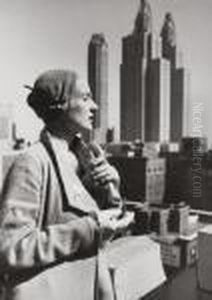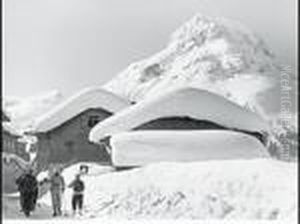Wolff Paul & Tritschler Alfred Paintings
Wolff Paul and Tritschler Alfred were a prominent duo in the field of photography, particularly known for their works in the early to mid-20th century that captured the essence of German life, architecture, and landscape during a period of intense social and political change.
Wolff Paul was born in 1887 in Mulhouse, then part of the German Empire, and is best known as a pioneering figure in the use of the small-format camera for professional photography. He studied medicine before his interest shifted to photography. His early work involved experimenting with the Leica camera, which was revolutionary at the time for its portability and the quality of images it produced.
Alfred Tritschler was born in 1905 in Frankfurt-am-Main, Germany. He met Paul Wolff in Frankfurt, and the two formed a partnership in 1929. Tritschler initially trained as a banker, but his passion for photography led him to pursue it professionally. Tritschler brought with him a flair for composition and a keen eye for detail, which complemented Wolff's technical expertise and innovative spirit.
Together, Wolff and Tritschler established a photography studio and their collaboration resulted in some of the most iconic images of Germany during the Weimar Republic, the Third Reich, and the post-war era. They specialized in a wide range of subjects including industrial photography, landscapes, cityscapes, and portraits. Their work was characterized by a clear, objective style that aimed to present subjects in a direct and unembellished manner.
Their photography business was highly successful, receiving numerous commissions from both private and governmental bodies. During the Nazi era, they were commissioned to document various aspects of the regime, including the architecture and events like the Olympic Games in 1936. This association with the Nazi regime, however, has been a subject of controversy in evaluating their legacy.
Wolff Paul died in 1951, after which Alfred Tritschler continued to run their studio until his death in 1970. Despite the complexities of their time and the moral questions surrounding some of their commissions, the body of work left behind by Wolff and Tritschler remains a significant historical resource. It provides a vivid visual record of Germany through several decades of upheaval and change, showcasing their mastery of the photographic medium and their ability to capture the spirit of their era.

